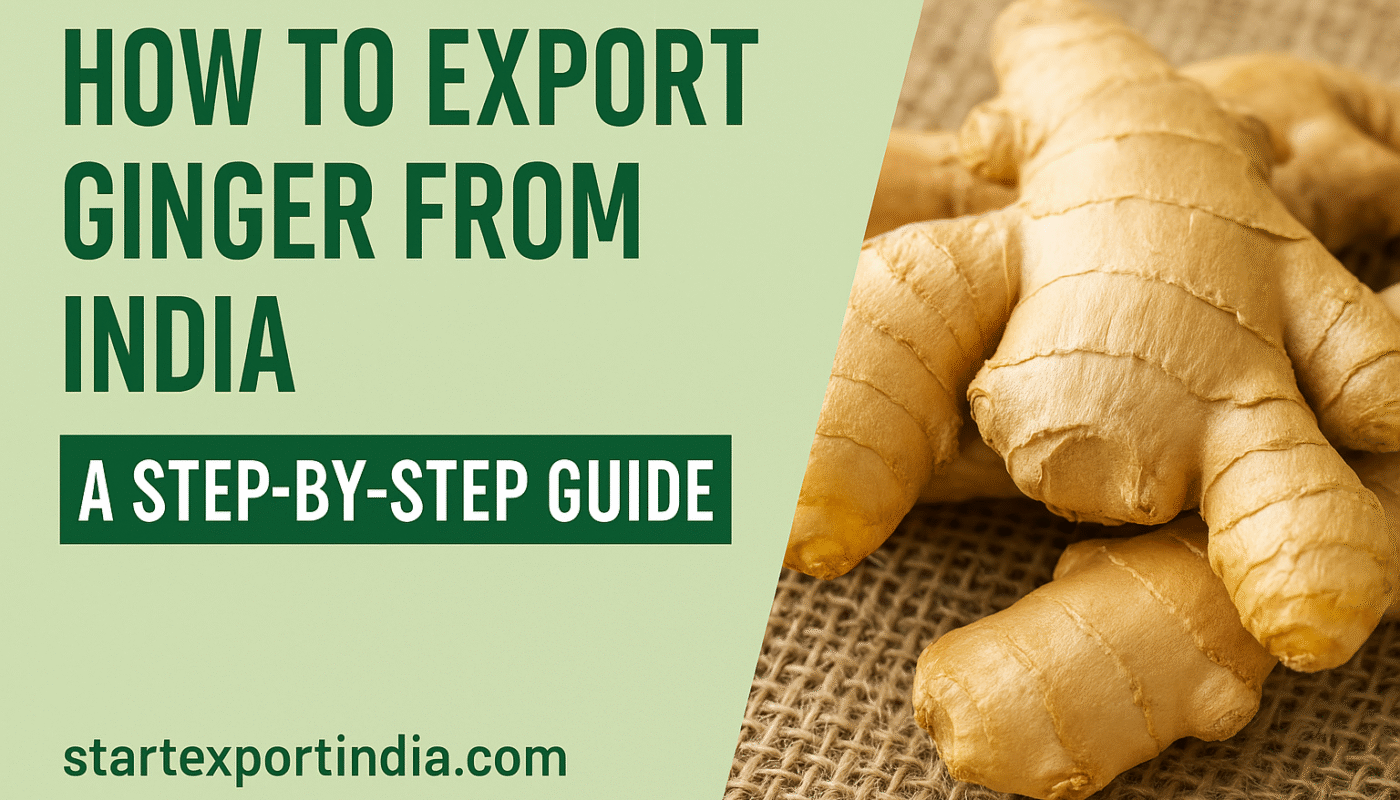India is one of the largest producers and exporters of ginger in the world. From the lush farms of Kerala, Meghalaya, and Karnataka to global markets in the Middle East, Europe, and Southeast Asia, Indian ginger is in high demand for its rich aroma, medicinal value, and culinary versatility.
If you’re looking to tap into this profitable agro-export opportunity, here’s a complete step-by-step guide to exporting ginger from India.
🌍 Why Export Ginger from India?
- High Global Demand – Used in culinary, pharmaceutical, and cosmetic industries.
- India’s Advantage – Organic and high-oil content ginger varieties.
- Good Margins – Low input cost, high export price.
- Govt Incentives – Schemes under APEDA and DGFT to support agro-exporters.
📦 Step-by-Step Guide to Export Ginger from India
✅ 1. Register Your Business
To start exporting, first complete the legal formalities:
- Register your firm (Proprietorship, Partnership, or Pvt Ltd)
- Get a PAN card
- Open a current account with a bank
✅ 2. Obtain Importer Exporter Code (IEC)
Apply for an IEC from DGFT – this is mandatory for all exporters.
✅ 3. Choose the Right Ginger Variety
Popular Indian ginger varieties for export include:
- Nadia
- Rio-de-Janeiro
- Maran
- Thingpui (from Mizoram – popular for organic exports)
You can export fresh, dried, or powdered ginger depending on buyer demand.
✅ 4. Get APEDA Registration
For exporting agricultural and processed food products, register with APEDA. This enables you to apply for export subsidies, participate in trade fairs, and get guidance.
✅ 5. Identify Target Markets
Top importers of Indian ginger include:
- Bangladesh
- UAE
- USA
- Netherlands
- UK
- Saudi Arabia
Use tools like Trade Map, IndiaTradePortal, or DGFT Export Reports to study demand and pricing.
✅ 6. Find Genuine Buyers
You can find buyers through:
- B2B Portals – Alibaba, TradeIndia, ExportersIndia
- Exhibitions – Gulfood, SIAL, BioFach India
- LinkedIn & Trade Associations
- Government buyer-seller meets
✅ 7. Packaging and Grading
Follow international standards for packaging:
- Fresh Ginger – Packed in 5kg, 10kg, 25kg cartons with ventilation holes
- Dry Ginger – Vacuum-sealed bags or jute bags
- Ensure proper grading, cleaning, and labeling as per buyer/importing country norms.
✅ 8. Logistics & Shipping
- Choose between Air Freight (for fresh ginger) or Sea Freight (for dry ginger)
- Work with a reputed freight forwarder or CHA (Customs House Agent)
- Prepare documents like:
- Commercial Invoice
- Packing List
- Phytosanitary Certificate
- Certificate of Origin
- Bill of Lading / Airway Bill
✅ 9. Payment Terms & Forex
Decide on payment terms: Advance, LC, or Documents Against Payment (DP)
Always hedge currency risks if dealing in USD, EUR, or GBP.
✅ 10. Follow Export Compliance
- Comply with plant quarantine, FSSAI norms, and customs procedures
- Keep track of GST refund, duty drawback, and RoDTEP benefits
📈 Profit Margin in Ginger Export
- Fresh Ginger FOB price: $600 – $1000 per MT
- Dry Ginger FOB price: $1200 – $1600 per MT
- Profit margin depends on quality, market, and shipping cost
📝 Pro Tips for New Exporters
- Start with small trial shipments
- Focus on quality and consistency
- Keep buyer communication professional and prompt
- Maintain proper records for refunds and audit
🚀 Final Thoughts
Exporting ginger from India can be a lucrative and sustainable business, especially with growing interest in health and natural remedies worldwide. With the right market strategy, certifications, and logistics setup, Indian exporters can thrive in this evergreen trade.
📘 Ready to Start Exporting?
👉 Want to master export pricing step-by-step, including Incoterms, margin, freight, and refunds?
📘 Grab our ₹299 beginner-friendly guide:
Start Exporting from India in Just 30 Days




